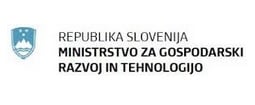Let us entrust you with an unwritten rule in the world of translation:
Let s take the bull by the horns – proofreaders are often pointless, right?
As a native speaker of any language, you may find it totally unnecessary to send the documents in that language to be proofread. But proofreading of most types of texts to be read by pairs of eyes other than your own is not only welcome, but also recommended and preferable.
If you have doubts, imagine you need to put washable tiles on your terrace. You work at the bank, but since you have walked on washable tiles several times in your life as almost everyone you hang out with has them and it can't be that hard – you simply place them one next to another so that they don't touch completely (as you read in Mike’s blog and the flyer from the hardware store), and it’s done!
We have no doubt that you are able to lay washable tiles by yourself – you may even lay them straight. However, there is some doubt about what will happen when the first heavy showers come, when months pass and the tiles begin to move left and right because of the incorrectly set base (because how would a bank worker know you have to consider that!).
Are we getting closer to the compromise on the answer to the question of whether professional proofreading is necessary? ![]()
What does the proofreader do?
A proofreader is a linguist who is as important in a translation project as a translator, as he or she represents the final pair of eyes before submitting a project (at least those pairs that focus on a language). While the translator primarily deals with the translation itself and the appropriateness of the terminology, the proofreader ensures the language of the target text is smooth and grammatical and spelling rules followed as well as possible stylistic guidelines.
Let's examine the importance of proofreading in proofreading translations, with the five most important:
Task 1: A proofreader first bilingually compares the appropriateness of the translation with the original, which means that he or she compares word by word, sentence by sentence and, if necessary, corrects, adapts, improves.
Task 2: During proofreading, the proofreader focuses on the consistency of the same expressions within the text and unifies them, while also correcting spelling, grammatical and stylistic errors.
Task 3: After the bilingual review, the proofreader performs a monolingual review of only the target text to ensure that the text in the target language flows smoothly and sounds natural – as if it had been written in that language, not translated into it.
Task 4: The bilingual and monolingual reviews are followed by a spelling review. Using the “Spellcheck” function if proofreading in CAT tools, spelling can also be checked in Word and if a translation is in Excel, the text is manually copied to Word and the spellcheck is performed there. It’s a mandatory step of every proofreader and it shouldn’t be skipped in any case.
Task 5: In the case of proofreading performed in the CAT tool, the proofreader performs so-called quality control (QA). It reveals possible inconsistencies within the text, depending on the translation memory and terminology base, incorrectly transferred numbers in the translation, typos, unnecessary double spaces, etc. It is an extremely important step in proofreading, which ensures consistency within the text and all texts already translated for the same client, as well as additional verification of compliance with grammatical and spelling rules.
When it comes to monolingual proofreading, the task of the proofreader is even more important – he or she can then focus exclusively on the monolingual text, which means that all the attention is devoted to it. The corrections that are part of the proofreader’s work are grammatical and spelling, and also stylistic if the text does not run smoothly or does not read naturally.
EGO is just a yogurt in the proofreader’s dictionary
People are different – and so are proofreaders. If you come across them often, sooner or later you will run into one who replaces all grammatically correct and contextually appropriate terms with equivalent synonyms, only to justify the time spent.
However, remember this valuable advice: a good proofreader corrects only parts of the text that have actually been translated incorrectly, are stylistically poor or are written too awkwardly or too literally.
The unwritten rule of proofreaders with a healthy ego is: Don’t correct what is not incorrect.
The unwritten rule of excellent proofreaders, however, is: Instead of unnecessary corrections, tell a good translator that the job done has been done well. It doesn’t hurt – checked!
Who needs proofreading anyway? We do speak the language, don’t we!
We learned our mother tongue in school for many years. We’ve read tons of books for a school Reading Badge and a book report, we were sent to a language competition or two, and we are involved in the language on a daily basis – not only in the form of reading the news and subtitles of films and series, but also fiction books, professional literature for work and business documents.
Assuming appropriate quality of the source, all of these have a major impact on the consolidation of knowledge, but language is a living organism that is changing, and we are only humans who sometimes forget the rules we once knew by heart at three in the morning.
Let us know when you arrive, and be on time! Later after the meeting, Maya and Sonja will share the themes of the event, which will happen on 31 April 2019. On pages 5–9 you will find travel instructions directions – after a few minutes you will have time to ask questions.
The proofreader who participated in this article hid 10 very obvious mistakes in the previous paragraph that no proofreader should ignore – but are often overlooked by anyone who does not work with the language professionally on a daily basis.
Corrected text:
Let us know when you arrive and be on time! Later, after the meeting, Maya and Sonja will share the agendathemes of the event, which will happen held on 3130 April 2019. On pages 5–95–9 you will find travel directions; you will have time to ask questions after a few minutes.












